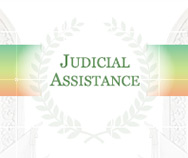Patent Law of the People's Republic of China
Chapter I General Provisions
Article 1 This Law is enacted in order to protect patent rights for inventions-creations,encourage invention-creation,to facilitate the wide application of inventions-creations, promote the progress and innovation of science and technology,and meet the needs of the socialist modernization drive.
Article 2 For the purpose of this Law, "invention-creation" means inventions, utility models and designs.
Article 3 The patent administration department under the State Council is responsible for the patent work throughout the country. It accepts and examines patent applications and grants patent rights for inventions-creations in accordance with law.
The administrative authority for patent affairs under the people's governments of provinces, autonomous regions and municipalities directly under the Central Government are responsible for the administrative work concerning patents in their respective administrative areas.
Article 4 If an invention-creation for which a patent is applied involves national security or other vital interests of the State that require secrecy, the matter shall be treated in accordance with the relevant provisions of the State.
Article 5 No patent right shall be granted for any invention-creation that violates the laws of the State, goes against social morals or is detrimental to the public interest.
Article 6 An invention-creation, made by a person in execution of the tasks of the entity to which he belongs, or made by him mainly by using the material and technical means of the entity is a service invention-creation. For a service intention-creation, the right to apply for a patent belongs to the entity. After the application is approved, the entity shall be the patentee.
For a non-service invention-creation, the right to apply for a patent belongs to the inventor or creator. After the application is approved, the inventor or creator shall be the patentee.
In respect of an invention-creation made by a person using the material and technical means of an entity to which he belongs, where the entity and the inventor or creator have entered into a contract in which the right to apply for and own a patent is provided for, such a provision shall apply.
Article 7 No entity or individual may suppress the application of an inventor or designer for a patent in respect of an invention-creation that is not job-related.
Article 8 For an invention-creation jointly made by two or more entities or individuals, or made by an entity or individual in execution of a commission given to it or him by another entity or individual, the right to apply for a patent belongs, unless otherwise agreed upon, to the entity or individual that made, or to the entities or individuals that jointly made, the invention-creation. After the application is approved, the entity or individual that applies for it shall be the patentee.
Article 9 If two or more applicants apply separately for a patent on the same invention-creation, the patent right shall be granted to the person who applied first.
Article 10 The right of patent application and the patent right itself may be assigned.
If a Chinese entity or individual wishes to assign a right of patent application or a patent right to a foreigner, it or he must obtain the approval of the relevant competent department under the State Council.
Where the right to apply for a patent or the patent right is assigned, the parties shall conclude a written contract and register it with the patent administration department under the State Council. The patent administration department under the State Council shall announce the registration. The assignment shall take effect as of the date of registration.
Article 11 After the grant of the patent right for an invention or utility model, except where otherwise provided for in this Law, no entity or individual may, without the authorization of the patentee, exploit the patent, that is, make, use, offer to sell, sell or import the patented product, or use the patented process, or use, offer to sell, sell or import the product directly obtained by the patented process, for production or business purposes.
After the grant of the patent right for a design, no entity or individual may, without the authorization of the patentee, exploit the design, that is, make, sell or import the product incorporating its or his patented design, for production or business purposes.









